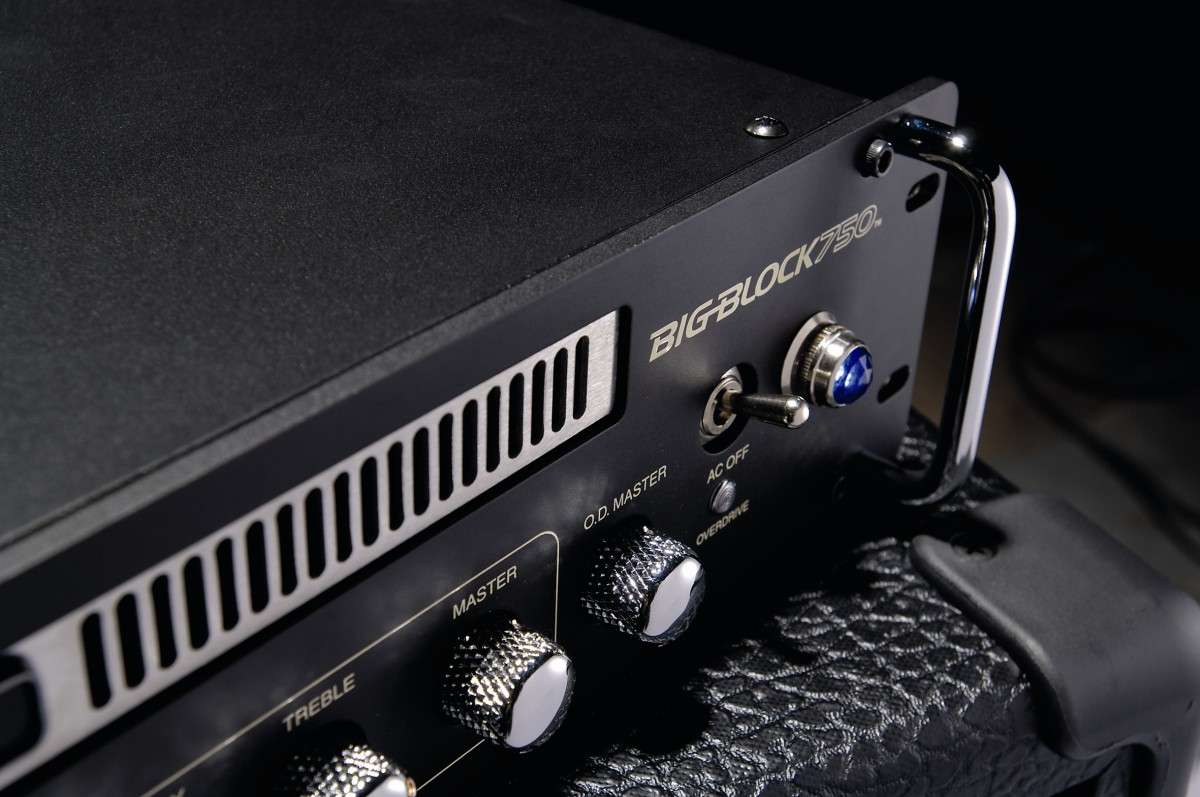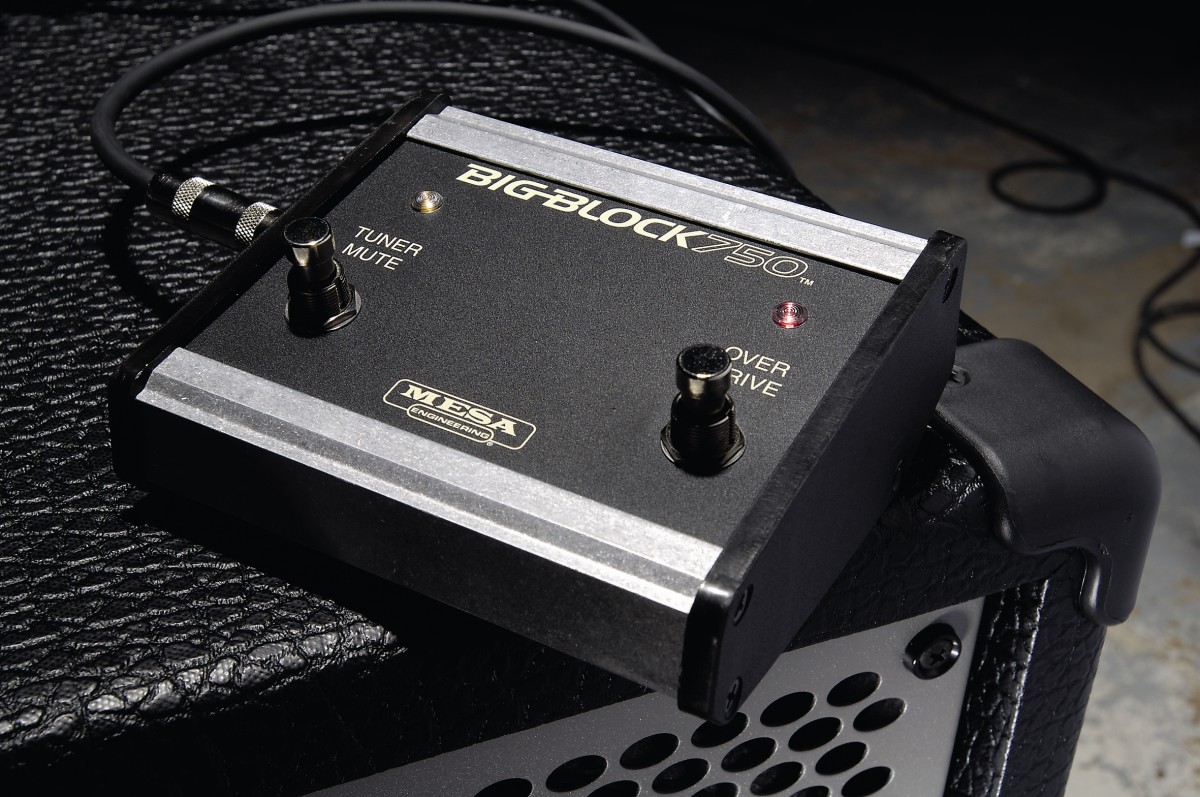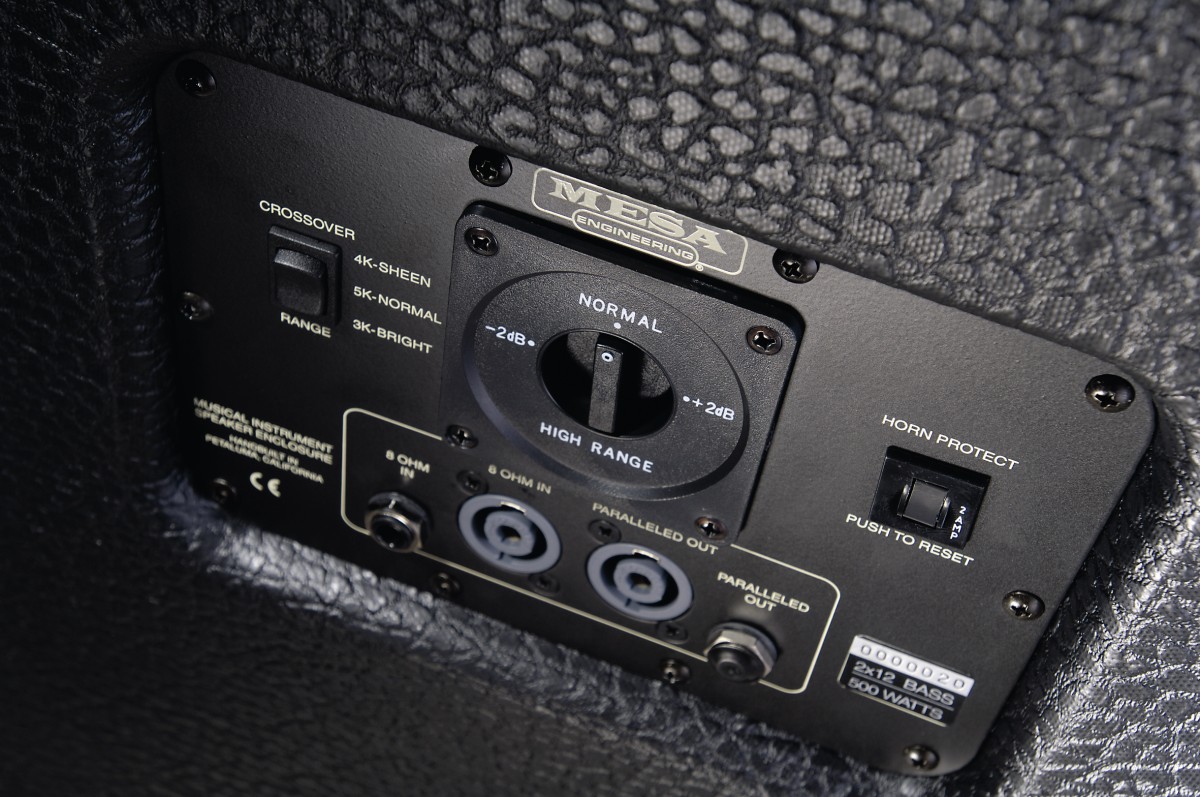MusicRadar Verdict
Another excellent effort from Mesa/Boogie, even if the best-looking versions will set you back a fair bit.
Pros
- +
Choice of design. Positive mid-range. Very user friendly.
Cons
- -
Although it looks cool, the extra £200 for the carcass seems a lot.
MusicRadar's got your back




In spite of several high-quality bass amplifiers finding their way to the UK you only have to mention the words "new Mesa/Boogie bass rig" and every player's attention is immediately grabbed.
The company is well established and known for its excellence in bass amplification design, so anything they do is of importance to the industry.
Mesa never compromises on style, build quality or power so you expect your hand to have to go deeply into your pocket, but this is actually less costly than a lot of their ranges. But will it tempt us to blow the nest-egg, or put off that holiday yet again…
Big Block 750 head
The more seasoned among you will recognise the M-Pulse styling, as the Big Block is an addition to that range.
As a regular rack-mountable 2U head this is an attractive design, but who could possibly resist the striking 'boxed' version with the badged carcass in black rhino skin covering with cool retro silver piping?
Okay, it costs a bit more (£200 to be precise) but it's definitely an option worth considering if you're taking this rig on the road. The domed and knurled control knobs are chrome plated but note the stylish positional dimple left in exposed brass.
The Simul-State technology here means that the preamp and tonal circuit is valve-driven (4 x 12AX7) until it meets the dual MOSFET power stage providing great sounds and excessive output.
Want all the hottest music and gear news, reviews, deals, features and more, direct to your inbox? Sign up here.
And when it comes to control options, Boogie is certainly not known for holding back. In fact it often allows adjustments for the most remote possibilities, but it's precisely this attention to detail and the full understanding of what problems can occur for the gigging bass player that has earned the company its pedigree.
Fortunately the M-Pulse range is considerably less complicated than some of their models but there's plenty of tonal adjustment available, particularly in the mid-range.
Having both an active and a passive control as well as a frequency shift gives this amp a unique mid section and provides much of the sound character.
Bass and treble controls handle the more extreme frequencies and that's it as far as the clean sounds are concerned. A bonus is the overdrive channel with two associated controls. One is for the amount of overdrive, and the other for the final level.
It's all very straightforward and nicely set out so it's easy to get to grips with. As usual, the back is stuffed full of features - it is a Boogie, after all! Along with both Speakon and 6.4mm speaker output jacks and dual fan cooling are a plethora of options.
The Big Block comes with a dual-action footswitch for switching to overdrive or killing the sound so you can use a tuner. Thoughtfully, a carry pouch is provided for this.
2 x 12 PowerHouse bass cabinet
Looking more like a standard 4 x 10 cabinet rather than a 2 x 12, this PowerHouse design is another attention-grabber so it couples up with this head rather well.
The silver grille conceals the main drivers and high frequency horn, plus the 'Tri-Port' front portal system that ensures all available sound is projected forward.
Whether in the black rhino covering or the alternative silver bronco finish, this marine-grade baltic birchwood carcass is a tough cookie and built to last. Recessed handles and removable castors aid transport, and for extra protection it's fitted with Lexan corners and comes with a slipcover.
It's also equipped with a 'Player Control Network', a panel set into the back of the cabinet that houses a crossover switch with sheen, normal and bright settings, and an adjustable high frequency attenuator and an instant horn reset button to prevent damage to this.
Like the head it has a pair of Speakon connectors and a pair of jack sockets, offering both input and output linking. Together this enables you to make the best possible use of this impressive yet highly compact 600-watt cabinet.
Sounds
Although this Big Block head is capable of unleashing more power than the 600 watts of handling provided by the PowerHouse cabinet, there's still plenty of power and performance to be had from this very dynamic pairing. It's simple in operation yet the tone section is highly efficient.
The centre section is superb as both middle controls really focus the sound of the bass, and using them together or individually guarantees some great results.
The frequency shift is much more noticeable on the passive mid, of course, as the active mid is really piling on the sounds. But what's really noticeable is the throatiness and the meatiness supplied by the bass frequencies.
This may be typical of the attitude we expect from this company's products but it still blows your socks off in use! Add this to that distinctive mid-range and you can't go wrong.
There also seems to be plenty of top end available, although not enough to thin down the overall sound. It's great for clean note defiition but excessive use can make percussive playing painful - slap players should use this with caution (please!).
But this is where the cabinet adjustments can be used to your advantage, using what the manufacturers refer to as the Style Control Interface. This means using the crossover switch with the horn attenuator to finely adjust the sound associated with your playing style for the best advantage. Nice touch.
Tuner mute and overdrive are activated by the footswitch, with the corresponding orange and red LEDs being duplicated on the front panel so you have no excuses for being in the wrong mode.
Having an independently switchable overdrive channel means you can set up the amp with two distinctive sounds then switch between them as required.
The overdrive itself is pretty substantial, ranging from subtle distortion to full-on buzzing bee, but is particularly effective when providing that added valve warmth.
Using the overdrive and gain controls together allows you to seamlessly blend both sound elements and you can easily control the levels of the clean and distorted signals with the individual master volumes.
As suggested, in order to release the full power potential of this head you'd need more than just this 2 x 12 cabinet, but in reality we found that we had to push the amp exceptionally hard in order to produce any protest whatsoever.
It's yet another example of the level of expertise this company has reached over the years: it's brimming with Mesa/Boogie features and looks, and it sounds the business.
It's important to note that the delicious casing costs another couple of hundred quid - but as this is a long-term investment, the extra is well worth it.
Boogie also provides custom options if you're interested, but the ranges already cater for much of the market and, for now, this is more than enough to absorb you - or to dream about owning one day.